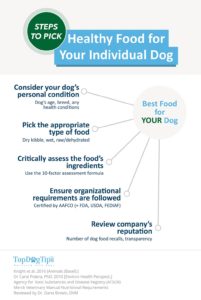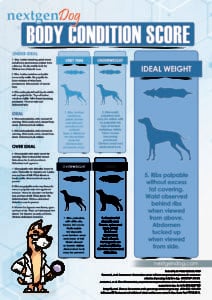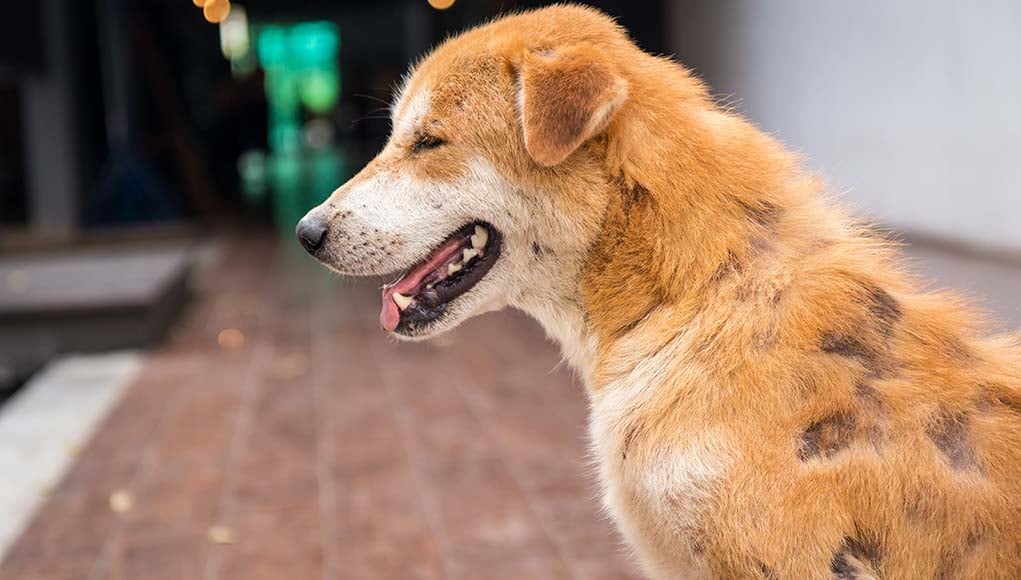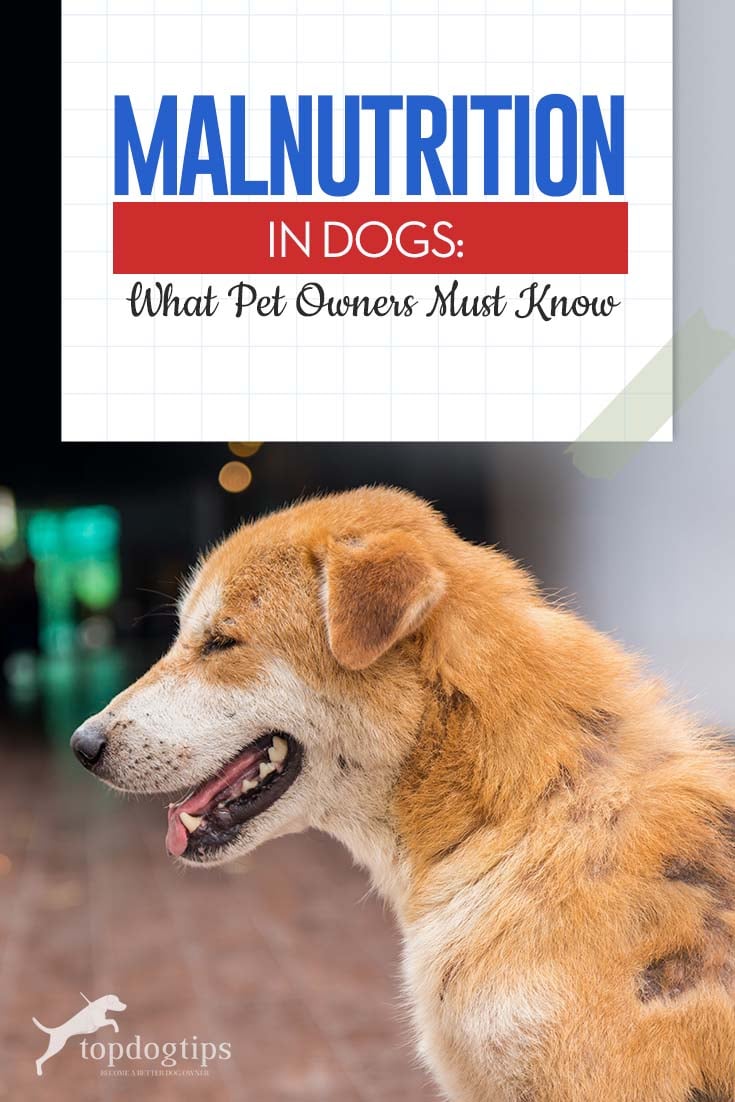Your dog requires constant care and nutrition, including making sure that there are sufficient vitamins and minerals in their diet to maintain normal body functioning. When a pet doesn't receive proper nutrition, they're at the risk of suffering from malnutrition, which causes serious health problems. These issues can be anything from weakness and lethargy, to shutting down of organs and eventually, death.
Symptoms of Malnutrition in Dogs
Proper nutrition is essential for appropriate canine health and should be carefully managed throughout the dog's life. Generally, if you're feeding your pet a high quality commercial kibble, there's no risk of malnutrition when following the exact guidelines on the package. Pet foods are carefully designed to provide all the essential nutrients and the amount of calories a dog requires.
However, if you're switching to a home-cooked diet, this is where things get a lot more tricky. You need to pay very careful attention to the amount of calories every homemade meal contains and the exact nutrients within it, to ensure your pooch receives everything that they need.
Lack of attention to the nutrients provided can lead to unintentional malnutrition. Any time a dog is showing signs of hunger or weakness, their health and daily diet should be evaluated by a vet to create an appropriate treatment plan.
Common signs of dog malnutrition include:
- Bad Breath
- Hair Loss
- Shedding
- Dandruff
- Dull Coat
- Body Odor
- Gas
- Unusual Bowel Movements
- Allergies
- Weight Loss/Gain
- Skin Disorders
PODCAST: How to Choose the Right Nutrition for Your Dog
Diagnosing Malnutrition in Your Dog
 The first step in adequately diagnosing malnutrition in dogs is completing a physical exam on a pet that is already experiencing symptoms. This includes completing standard tests at the vet clinic, including urinalysis, a biochemical profile, and a complete blood count.
The first step in adequately diagnosing malnutrition in dogs is completing a physical exam on a pet that is already experiencing symptoms. This includes completing standard tests at the vet clinic, including urinalysis, a biochemical profile, and a complete blood count.
This determines whether the dog is under or overweight while also determining the health of organs, particularly the liver and kidneys. If a cause is not identified, a fecal float may be used to test for the presence of parasites in their system.
After the treatment of any underlying diseases or conditions are treated or ruled out, the dog’s daily diet and activity will be evaluated. The vet will check the caloric intake, nutritional balance of the food, the dog’s activity levels, and the portion of time during which the malnutrition developed.
Diseases and Conditions
Malnutrition is not always a lack of certain nutrients, but can also be the mismanagement of the animal's diet affecting a pre-existing condition or illness. Different conditions require different nutrients to ensure the dog remains in tip top health. When the essential and appropriate nutrients are not provided, this may also cause specific conditions. For a few, there are simple diet guidelines to follow.
For dogs at risk of Congestive Heart Failure, avoid excessive salt as it can increase the dogs’ chances of developing or worsening the condition.
Dogs showing signs of Growth Disorders tend to receive too much or too little calcium in the diet. During their adolescent stages, this can cause abnormal rates of bone growth.
Kidney Disease is experienced by dogs that suffer some nutritional imbalance, whether it be excessive amounts of phosphorus, potassium, sodium, or dehydration, to experience kidney issues and kidney failure.
When the dog overeats overall or eats food that is improperly balanced, or unhealthy, the dog may begin to suffer from obesity.
The condition known as pancreatitis that is characterized by an inflamed pancreas is most often triggered by excessive amount of fats in the dog's diet.
Dog Malnutrition Treatment
If all underlying medical issues have been addressed or ruled out, the vet will usually take the information from the health evaluation to determine a proper diet and activity adjustment plan for your pet. This will also depend upon the dog's breed, age, and overall health.
The main recommendation is to change the food brand currently being given to the dog. The food will need to be checked for the necessary nutrients or simply to a higher quality brand. Increasing or decreasing their activity levels and the use of vitamins and supplements typically accompany the change in diet.
These types of changes can be made in small portions at home if the dog is believed to be suffering from malnutrition. When the transition requires more than a diet and activity change, that is when more trips to your veterinarian are necessary and should not be put off any longer.
If the dog is in crisis and requires emergency malnutrition treatment when taken to the vet, they will often be given supportive care. That will usually include IV fluids to prevent dehydration and to correct any nutritional imbalances. If the deficiency is caused by more than improper nutrition, and the dog suffers from an underlying disease or condition, the treatment will target their specific affection.
Recovery from Malnutrition
Majority of health issues that are caused by malnutrition, if diagnosed early, are reversible and will go away once the proper nutrition is provided, and the condition is treated with the appropriate medication. This is only when the conditions are caught early on. If the conditions remain unaddressed or unnoticed, the dog is more likely to suffer from long term effects, such as damage to their organs.
Other long term negative effects of malnutrition include, but are not limited to, diabetes, kidney disease, liver disease, and chronic pancreatitis. These diseases usually require lifetime treatment and management. If they are left unattended, it can lead to permanent deficiencies and in extreme situations, the animal's death.
Dogs recovering from malnutrition require the constant watch to make sure the proper nutrients are being received and that no further adjustment to their diet is needed. This is not a simple change but rather a full lifestyle change that the dog needs to undergo to maintain their proper health.
Caring Your Malnourished Dog
 In the beginning, caring for your malnourished dog may be difficult. The close monitoring of the dog that is needed can be tiresome and hard to manage with a busy schedule. Pet owners tend to adjust to this eventually, however.
In the beginning, caring for your malnourished dog may be difficult. The close monitoring of the dog that is needed can be tiresome and hard to manage with a busy schedule. Pet owners tend to adjust to this eventually, however.
Watch the dog's eating habits and change their food supply if they are gaining too much weight or not maintaining healthy weight. Increase your pup's activity, or reduce their food portions if weight gain is an issue. If the dog is suffering from weight loss, make sure they are eating correctly and not over-exercising without being provided enough calories.
Dog's weight monitoring (and following the BCS chart) is necessary as it prevents possible underlying causes from showing symptoms without noticing. When the dog is not improving over the course of observation, it is time to take them to a vet for a better plan. If your dog is losing weight for no apparent reason, without any changes to diet or lifestyle, the condition may be internal and requires further treatment that may not be offered at home.
READ NEXT: 6 Nutritional Guidelines for Safe Homemade Dog Food Cooking














